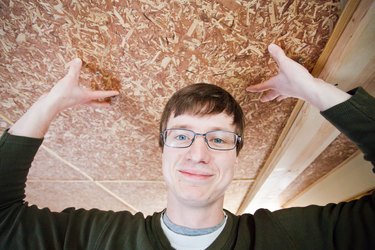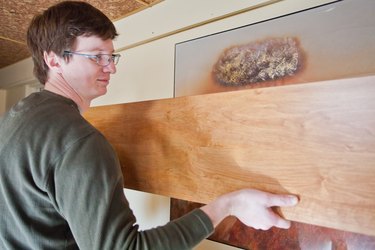
Laminated wood is an inexpensive and functional way of recycling what would otherwise be considered wood waste. Many layers of wood are bonded together, and the layers are then cut into either planks or sheets. These planks or sheets are then used for a variety of purposes, including making furniture, stout flooring, and this type of wood is often used in truck beds and vans as well. Plywood is a common example of laminated wood, though it is not the only product created through the wood laminating process.
Manufacturing
Video of the Day

Laminated wood is made from many thin strips of wood. Often these strips are cast-offs or mixed from a variety of different types of wood. These strips of wood are carefully sanded down so that the surfaces are smooth, and then they are glued together under pressure so that a single, cohesive board is created from the mixture of woods. If plywood is being made, then the grains of the strips will be at right angles to each other, whereas for other sheets of laminated wood, the grains of the various layers will be parallel to one another. For boards that must be more structurally sound, more layers are added to increase the thickness.
Video of the Day
Attributes

Laminated wood has a great deal of advantages that conventional, solid wood does not. For instance, laminated wood is resistant to warping or twisting due to its manufacturing process. Laminated wood can be made of hardwood or softwood depending on the needs of the customer, or from different kinds of wood to mix and match their strengths (such as the outer layers of a softwood for a certain look with the inner layers of a hardwood for strength). Laminated wood is also vulnerable to coming apart if the glue is exposed to moisture, insects, heat or any of these combinations.